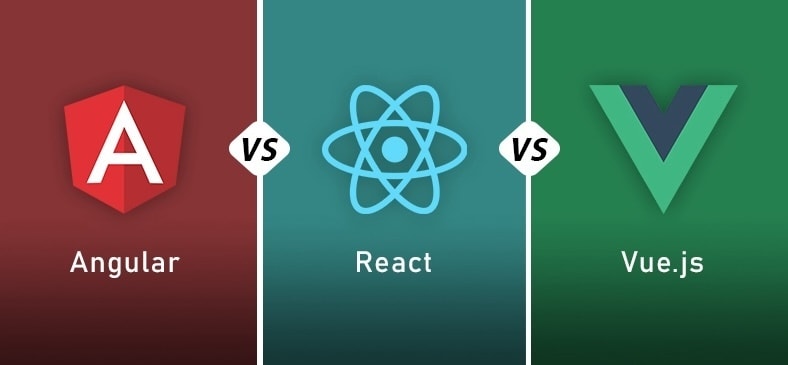Cutting-edge technologies like React, Vue, and Angular are great for making websites because they help both in creating user-friendly and interactive web pages. But which of these technologies should you use? Well, read on to find that!
Angular JS
Angular.js is a full-fledged JavaScript framework that’s used for making single-page, rich-featured, and dynamic web applications. Further, it’s a combination of HTML, CSS, and Javascript. It was developed by Google in 2010. In fact, it’s still managed by Google.
Now, what’s the advantage of using Angular.js? Well, by using Angular.js, if you need to perform data binding functionality, then there’s no need to write a separate code for it. You can write some code snippets and bind data from HTML control to the application’s data. You don’t even have to have a specific browser for it. It is compatible with both mobile and website browsers. And what’s better is that in Angular.js, you don’t have to write different code for performing different operations.
With a single code, the programmer can perform varying operations. The built-in dependency injection in it aids in easy website development. It also lets developers ditch complex DOM, and instead use directives to make components that can be reusable.
The downside of Angular.js is that it’s only design-friendly not developer friendly. A developer has to have good knowledge of MVC architecture for development in Angular.js.
React JS
React.js is a JavaScript front-end library created by Meta in 2013. Using React.js, developers can make reusable components. It’s best for dynamic websites. It is quite fast and simple for making the front end of a website. The pros of using React.js is that it speeds up the development process. React.js uses JSX which ultimately makes your code easy and simple. It can be good for SEO with the help of meta tags and true implementation of it. What’s even better? It’s easy to learn and use.
But despite all these pros, React.js also has some cons. First and foremost, it is a pretty rapidly changing library, due to which many programmers are not able to keep up with it. SEO wasn’t a main focus when designing React, which is why achieving good SEO is a bit tricky in React.js.
Vue JS
Vue.js was created by Evan You in 2014 and is somewhat similar to React.js. Additionally, it’s a progressive JavaScript framework for front-end development. It can additionally be utilized with varying libraries.
Additionally, if you want to develop single-page applications, it’s best to use Vue.js. As you see there are lots of problems that occur while developing and a single library is not enough. You have to use different libraries. As mentioned before, Vue.js can be used along with varying libraries. It’s also both user and beginner-friendly
Now, why should you use Vue.js? Well, it’s comparatively easier to learn than angular. It’s also used for incremental integration. This means if there’s an app that you have made and you want to add something to it. You just have to create a part in Vue.js and integrate it with the app.
It also has two-way binding. This makes it easy to track data updates and update components. Additionally, using Vue.js, you can also make customized reusable elements that can be used in HTML. Now, what’s the downside of Vue.js? Well, it has fewer plugins than React and Angular.
Conclusion
Every technology, like React.js, Angular.js, and Vue.js, has its upsides and downsides. They’re all like different tools in a toolbox. The key is to choose the one that fits the job you’re doing. What’s most important is making your project work the way you want it to, and each of these technologies can help in its own way



















